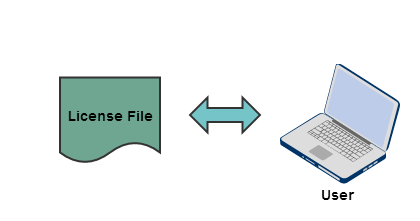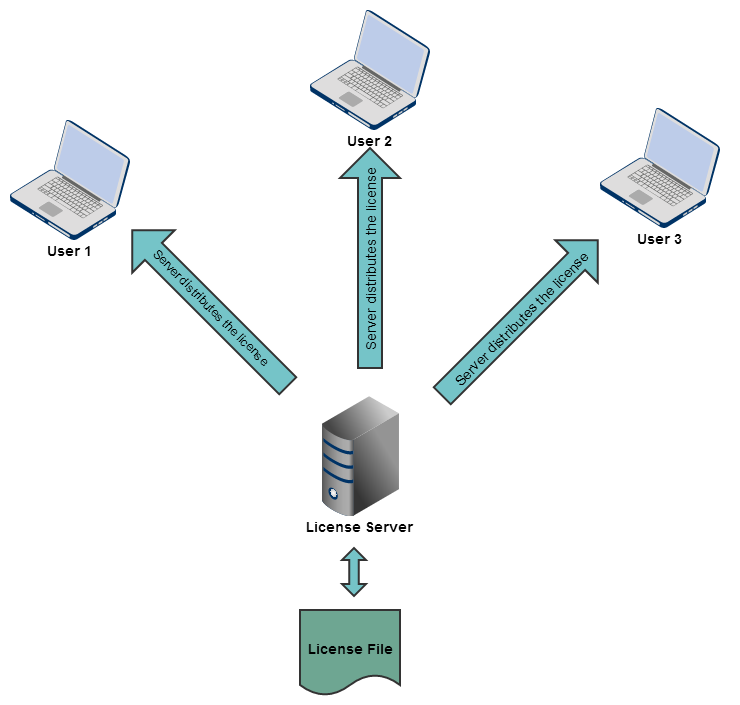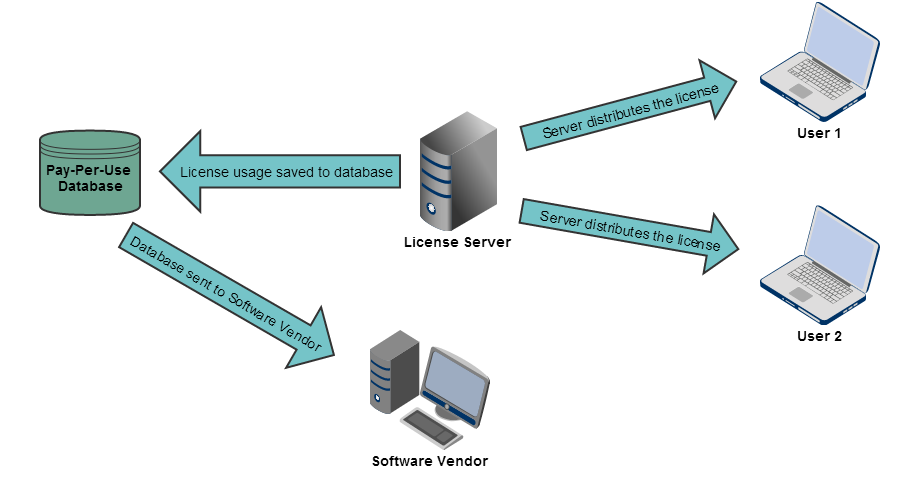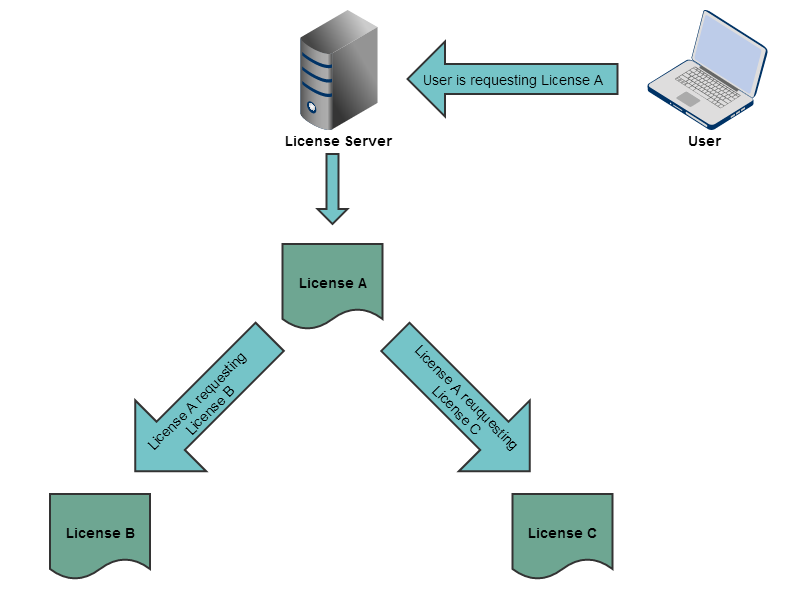Establish a license policy that suits your business. LM-X is configurable for a large variety of different license schemes, which usually consists of one or more features in your software. If your application has more than one differently licensed module, the license file will contain multiple features.
To establish a license policy, create one or more license template files, which contain a LICENSEFILE tag that encloses one or more FEATURE tags. Each FEATURE tag consists of a number of SETTING tags that specify the feature's individual attributes and define it as one of the following:
Node-locked licenses
Designed for individual users, node-locked licenses licenses allow a single instance of an application to run on a specified host. The following diagram shows an example of a node-locked license.
Floating licenses
Floating licenses allow an application to be used on a network. The example below shows an example of a floating license.
Determining whether to use node-locked or floating licenses depends on your end user's needs and how you prefer to distribute your software.
Time-limited licenses
Time-limited licenses are used for restricting usage periods and allowing subscription-based licensing models.
Trial licenses
Trial licenses allow users to evaluate your software before purchase.
Pay-per use licenses
Pay-per-use licenses let you back-bill customers after using a license.
Token-based/product suite licenses
Token-based/product suite licenses are used for letting you bundle products in diverse ways.
.





